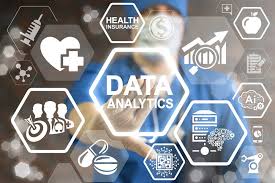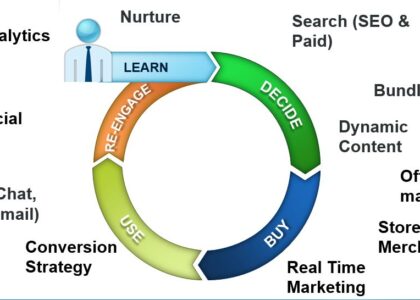The Power of Healthcare Data Analytics in Improving Patient Care
In today’s digital age, the healthcare industry is experiencing a transformative shift towards data-driven decision-making. Healthcare data analytics, the process of analysing and interpreting vast amounts of healthcare data to uncover valuable insights, is playing a crucial role in improving patient care, enhancing operational efficiency, and driving innovation in the healthcare sector.
Enhancing Patient Outcomes
One of the primary benefits of healthcare data analytics is its ability to improve patient outcomes. By analysing patient data such as medical history, treatment plans, and diagnostic test results, healthcare providers can identify patterns and trends that help them make more informed decisions about patient care. This leads to better diagnoses, personalised treatment plans, and ultimately improved patient outcomes.
Optimising Operational Efficiency
Healthcare data analytics also helps healthcare organisations optimise their operational efficiency. By analysing data related to resource allocation, patient flow, and staff performance, hospitals and clinics can identify areas for improvement and implement changes that streamline processes and reduce costs. This not only improves the overall quality of care but also enhances the patient experience.
Preventative Care and Early Intervention
Another significant advantage of healthcare data analytics is its role in preventative care and early intervention. By analysing population health data and identifying high-risk patients based on factors such as demographics, lifestyle choices, and medical history, healthcare providers can proactively intervene to prevent chronic conditions or manage diseases before they escalate. This proactive approach not only improves individual health outcomes but also reduces overall healthcare costs.
Driving Innovation in Healthcare
Healthcare data analytics is also driving innovation in the healthcare sector. By leveraging advanced analytics techniques such as predictive modelling and machine learning, researchers can uncover new insights into disease mechanisms, treatment effectiveness, and public health trends. This knowledge fuels medical advancements, leading to better treatments, novel therapies, and improved public health strategies.
The Future of Healthcare Data Analytics
As technology continues to evolve at a rapid pace, the potential for healthcare data analytics to revolutionise patient care is limitless. With the ongoing digitisation of health records, the proliferation of wearable devices that track health metrics in real-time, and the increasing adoption of telemedicine services, the volume of healthcare data available for analysis will only continue to grow. By harnessing this wealth of information through advanced analytics tools and techniques, we can unlock new possibilities for improving patient care and shaping the future of healthcare.
In conclusion,
Healthcare data analytics has emerged as a powerful tool for transforming the way we deliver care to patients. By harnessing the power of data-driven insights, we can enhance patient outcomes,
optimise operational efficiency,
promote preventative care,
drive innovation in medical research,
and ultimately improve overall quality of care within the healthcare industry.
8 Essential Tips for Effective Healthcare Data Analytics
- Ensure data accuracy and quality by regularly auditing and cleaning datasets.
- Adopt advanced analytics techniques like machine learning to extract valuable insights from healthcare data.
- Protect patient privacy and comply with data protection regulations such as GDPR.
- Collaborate with healthcare professionals to understand their needs and priorities for data analysis.
- Utilise visualisation tools to present complex healthcare data in an easily understandable format.
- Monitor key performance indicators to track the effectiveness of healthcare interventions and strategies.
- Stay updated on industry trends and advancements in healthcare analytics technology.
- Invest in training for staff to enhance their skills in data analysis and interpretation.
Ensure data accuracy and quality by regularly auditing and cleaning datasets.
Ensuring data accuracy and quality is paramount in healthcare data analytics. By regularly auditing and cleaning datasets, healthcare providers can maintain the integrity of the information being analysed. This process involves identifying and rectifying errors, inconsistencies, and missing data points to ensure that the insights derived from the analysis are reliable and actionable. By upholding high standards of data accuracy and quality, healthcare organisations can make informed decisions that lead to improved patient care outcomes and operational efficiency.
Adopt advanced analytics techniques like machine learning to extract valuable insights from healthcare data.
To maximise the potential of healthcare data analytics, it is crucial for healthcare providers to adopt advanced analytics techniques such as machine learning. By utilising machine learning algorithms to analyse vast amounts of healthcare data, valuable insights can be extracted that may not be apparent through traditional analytics methods. This approach enables healthcare professionals to uncover patterns, trends, and correlations within the data, leading to more informed decision-making, personalised patient care plans, and ultimately improved health outcomes for individuals and populations.
Protect patient privacy and comply with data protection regulations such as GDPR.
It is essential for healthcare organisations utilising data analytics to prioritise the protection of patient privacy and adhere to data protection regulations such as GDPR. Safeguarding patient data ensures confidentiality and trust between healthcare providers and patients. Compliance with regulations not only mitigates the risk of data breaches but also upholds ethical standards in handling sensitive information. By implementing robust security measures and following strict protocols for data handling, healthcare organisations can harness the benefits of data analytics while maintaining patient privacy and regulatory compliance.
Collaborate with healthcare professionals to understand their needs and priorities for data analysis.
Collaborating with healthcare professionals to understand their needs and priorities for data analysis is essential for the successful implementation of healthcare data analytics initiatives. By working closely with doctors, nurses, administrators, and other healthcare staff, data analysts can gain valuable insights into the specific challenges and opportunities within the healthcare setting. This collaborative approach ensures that data analytics solutions are tailored to meet the unique requirements of healthcare professionals, leading to more meaningful analyses, actionable insights, and ultimately, improved patient care outcomes.
Utilise visualisation tools to present complex healthcare data in an easily understandable format.
Utilising visualisation tools in healthcare data analytics is essential for presenting complex data in a format that is easily understandable and actionable. By transforming raw data into visual representations such as charts, graphs, and dashboards, healthcare professionals can quickly identify trends, patterns, and outliers within the data. Visualisation tools not only make it easier to communicate insights to stakeholders but also facilitate informed decision-making, leading to improved patient care outcomes and operational efficiency within healthcare organisations.
Monitor key performance indicators to track the effectiveness of healthcare interventions and strategies.
Monitoring key performance indicators (KPIs) is essential in healthcare data analytics to evaluate the effectiveness of healthcare interventions and strategies. By tracking specific metrics such as patient outcomes, treatment adherence rates, and resource utilization, healthcare providers can gain valuable insights into the impact of their initiatives. This data-driven approach enables healthcare organisations to identify areas for improvement, make informed decisions about patient care, and ultimately enhance the quality of healthcare delivery.
Stay updated on industry trends and advancements in healthcare analytics technology.
To maximise the benefits of healthcare data analytics, it is essential to stay informed about industry trends and advancements in healthcare analytics technology. By keeping abreast of the latest developments, healthcare professionals can leverage cutting-edge tools and techniques to extract valuable insights from data, improve patient care outcomes, and drive innovation in the field. Continuous learning and adaptation to new technologies ensure that healthcare organisations remain at the forefront of data-driven decision-making, ultimately leading to enhanced patient care and operational efficiency.
Invest in training for staff to enhance their skills in data analysis and interpretation.
Investing in training for staff to enhance their skills in data analysis and interpretation is a strategic move that can significantly benefit healthcare organisations utilising data analytics. By providing employees with the necessary training and resources to effectively analyse and interpret healthcare data, organisations can empower their staff to make informed decisions, identify trends, and extract valuable insights that drive improved patient care, operational efficiency, and innovation within the healthcare sector. Continuous learning and upskilling in data analytics not only enhance the capabilities of individual staff members but also contribute to the overall success and advancement of the organisation’s data-driven initiatives.





